An interview with DJ and producer Shir Khan
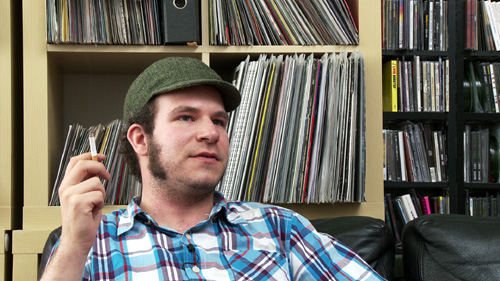
What are your musical influences?
Shir Khan: I started as a guitarist in a few hardcore bands, but at the same time I was interested in Hip-Hop and I bought my first turntables when I was nineteen. I used to collect records before that, but my first singles were simply pop music...
Followed by Ramones, The Lurkers, Stiff Little Fingers and - influenced by the skateboard scene - hardcore bands like e.g. the Bad Brains. So on the one hand there is the guitar background and on the other hand – as a DJ – I was influenced by Hip-Hop. And because of the sample-based structure of Hip-Hop I became interested in the origins of those samples. So I listened to Rare Groove, Soul and Funk and started to buy these records. Then Acid Jazz happened, followed by Jungle, Drum ‘n’ Bass and Ragga which led to Dancehall – the amalgamation of Reggae, Ragga and Hip-Hop.
The musical spectrum grew and there were new styles and movements every day: UK Garage, 2 Step… At first I didn’t like the 4-to-the-floor beat – namely Techno – but broken beats. When electroclash hit the scene I became more open minded.
Sometimes between 2000 and 2002 there was the first big Mash-Up wave, that seemed to me like a summary of my record collection. I started to spin eclectic DJ-sets. As a Hip-Hop-DJ you ought to have either amazing scratching skills or a good selection. And I was a good selector – a DJ-set could have started with tripped dope beats and ended with the Sex Pistols.
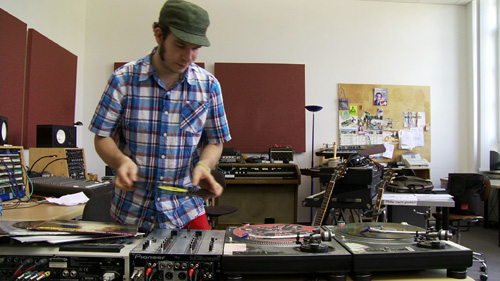 What is a Mash-Up? (Bootleg, Blend, Bastard Pop)
What is a Mash-Up? (Bootleg, Blend, Bastard Pop)
Shir Khan: You simply take an instrumental-track – maybe a pop or a rock song – and add an acapella to it – often from a complete different genre like hip-hop, r’n’b or whatever. The difference to usual sampling, where you’re going to sample five or ten seconds or a few bars and loop them, is, that a mash-ups consists of an entire track – you simply rip it.
There was a well-known software called ACID with witch you could easily adjust tempo and pitch and create a bootleg in minutes. I used to plunder my record collection and due to my eclectic DJ-sets I was encouraged to create a bizarre mélange.
A music journalist once said that bootlegs are like car accident: very shocking but at the same time very fascinating. To me it is like stultification of the whole pop history, a subversive blast of taboo. It was very hip at the beginning but quickly turned into a boring student party joke. It was the radical approach which I found fascinating.
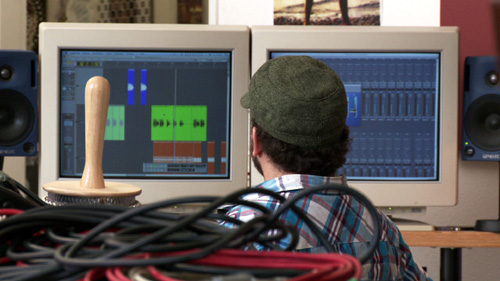 What sources are used to create a Mash-Up?
What sources are used to create a Mash-Up?
Shir Khan: Since I was a record collector from scratch I began to search my collection for records containing acapellas or instrumentals. But there was also a source for acapellas you couldn’t possibly find. One was acapellas4u.co.uk where you could find tons of acapellas for free download. I personally was influenced by a website called boomselection and a forum called gybo5.com which was operated by McSleazy. Of course you could also download things via peer-to-peer clients like KaZaa, Limewire, Soulseek, Napster etc. – Bootlegging started in the net and it died there…
What happens when different musical genres clash?
Shir Khan: Most bootleggers were bedroom producer who hoped to hit the top ten with a bootleg. And that brought up the discussion about how to license an illegal mash-up. The funny thing is: A mash-up is a superhit. That is the basic idea: to take the best out of one track and mix it with the best elements of another one. And if it fits then something is happening. ACDC are jamming with Missy Elliot and two musical worlds are colliding. The whole musical context is scrambled and the interesting thing is that people who gave a shit about e.g. Hip-Hop are beginning to prick up their ears.
The more obvious the bootlegs were the bigger was the impact. The more commercial the more successful and radical. Some musicians like Coldcut or DJ Shadow have been digging for rare records to sample from, but that only worked for nerds. And for that reason bastard pop hit directly in the face.
 What is DJ Culture?
What is DJ Culture?
Shir Khan: It is a historical issue. For sure Grandmaster Flash was one of the predecessors of sampling using funk and soul records to cut them back and forth to obtain something like a blockparty-beat – a danceable drum break which lasts forever.
Bootlegs and Edits are constitutive for DJ Culture as well. There are still a big number of White Labels out there, which often contain off-the-record remixes or edits and as a DJ you’ll hunt for them as the newest and freshest stuff to play. Limited Editions with a hot bootleg on it. It is illegal, but as a DJ you don’t care. You simply want to move the crowd.
What is Bootleg Culture?
Shir Khan: Talking about Mash-Up I’d like to note that there was never really the attempt to earn loads of money or to enrich oneself. It was a jest, a funny idea, which was released on vinyl. Thus the Mash-Up culture took place in the internet and not that much on vinyl. The net was flooded with Mash-Ups.
The operator of the website boomselection created a CD out of the most important Bootlegs and sold it via Rough Trade. The original artists didn’t care or didn’t even know about that, but the bootleggers were angry as hell, that someone was earning money with their bootlegs. And there is a contradiction between the fact, that you are ‘stealing’ from different artist to produce a Mash-Up and feel as a victim at the same time. Of course bootleggers have created something new, but they never had any chance to get a copyright. The website surrendered after heavy discussions…
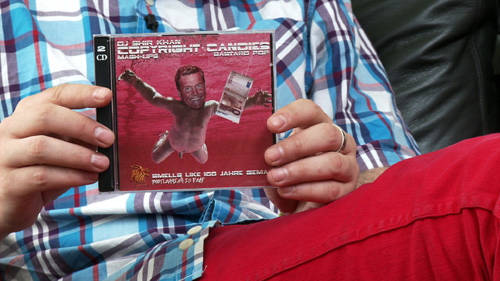
I also compiled a CD called ‘Copyright Candies’ – a collection of the best Bastard Pop tracks. I asked myself if I should release it or not and decided to sell it through a distributor. I gained popularity and was branded as a Mash-Up-DJ. I never produced as much Mash-Ups as the others, I felt more like an observer of the scene.
The cover is a montage of the Nirvana album ‘Nevermind’ and the head of german pop producer Dieter Bohlen. He is fishing for a ten euro bill and there’s a subtitle that says ‘Smells Like 100 years of GEMA’ (GEMA is the german collecting society). The plant where the CDs should be produced refused to deliver that cover (…) and they burned them all. So I needed to print them somewhere else and equip them manually.
Did Bastard Pop implement DJ Culture into MOR music?
Shir Khan: For me it was rather an extension of my DJ sets, a radicalization of Deejaying. With the exception of 2 Many DJs everyone played vinyl by that time. CDs were only good to deliver exclusive tracks. It started with people who created their own edits – just re-arrangements of existing tracks to make them mixable. 2 Many DJs came up with their bastard pop tracks which didn’t exist on vinyl, so they had to play them via CD.
Then there was the release of software like Traktor or Final Scratch in 2001. I was a beta tester for Final Scratch and I was supposed to show people how to create Bastard Pop with it. So in that sense Bastard Pop was an extension of DJ-technology and helped to develop new soft- and hardware like Ableton Live and Traktor.
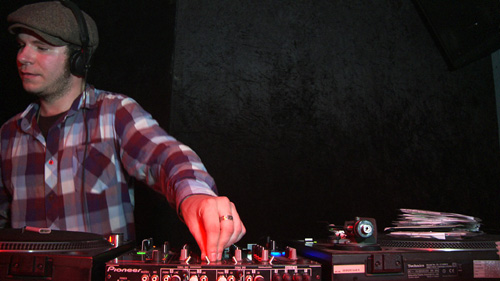 Imagine the non-existence of a sampler, what music would you produce?
Imagine the non-existence of a sampler, what music would you produce?
Shir Khan: I started to make electronic music encouraged by sampling. There are several ways to produce electronic music, but for me it was that Hip-Hop-approach which interested me. From time to time there is a discussion about sampling and if it’s still Hot or Not. It’s like a trend or period in the life of an artist.
Since it is common to rip a youtube-video an remix it with a simple home computer you can see a lot of bastard videos out there. It started with a collective called eclecticmethod – the guys who produced MTV Mash – but today every kid can produce a mash-up-video. With the help of myspace and facebook it became easy to spread such things. And that is the main purpose: To be heard!
I became famous with the help of the Sets and Bootlegs I uploaded in the net. Before that you had to release a record to get bookings from abroad. Thanks to the internet-hype it was very easy for me.
Did you concern yourself with or are you influenced by avant-garde composers or sound artists?
Shir Khan: Of course. John Cage for example who used record material in his compositions or William S. Burroughs who invented the tape cut-up theory. He recorded his voice on tape, rewound it and recorded again – like an overdub – creating a collage of text and sound. I really like the idea of experimenting with tape. I grew up with tapes and I’ve got a huge tape collection. To manipulate preexisting material is fascinating and it existed before in e.g. fine arts: Andy Warhol, Pop Art, Collage. Basically the whole Mash-Up thing is deep-rooted in collage and the Dadaist movement. (…)
In the net everything is organized through hyperlinks. A self-referential system of links and Bastard Pop is exactly like that: a permanent citation of Pop Culture. Bastard Pop is the mocker of Pop Culture and MOR music. Or the sabotage of MOR radio using MOR elements.
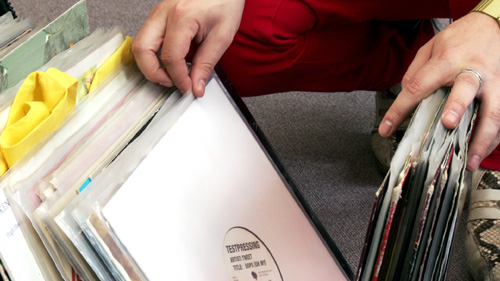 DJ Shadow, for example, is only using samples from the original pressing of the original record. Does that make sense for you?
DJ Shadow, for example, is only using samples from the original pressing of the original record. Does that make sense for you?
Shir Khan: That sounds like the nineties point-of-view: You’re giving respect to the artists you’re sampling from. Most Hip-Hop artists sampled from musicians they adored e.g. Donald Byrd or James Brown. James Brown didn’t like to be sampled, but with his ‘Funky Drummer’ he delivered one of the hottest drumbeats in the history of music and this sample is used in countless tracks.
I like the approach to sample from the original 7”-single and the original pressing. It is nostalgic and a reference to vinyl as a medium. It seems to me that is not en vogue today and maybe outdated, but it makes sense. I used to sample my acapellas only from the original 12”-Maxi Single. I was traveling through several cities for years in search of a certain record. When eBay emerged it became really easy but also expensive to buy records online. And sometimes just for the sake of one acapella.(...)
What is Baltimore Club, what is Baile Funk?
Shir Khan: The idea of a hot drumsample is intriguing for a lot of different styles. Baile Funk is deep-rooted in Mash-Up Culture. It emerged in the favelas of Rio and is also called Funk Carioca. It is always based on one riddim, the tamborzino, which is a kind of trademark. Everything is built on this beat and on the top there are crazy samples like ‘Sweet Dreams’ from Eurythmics and the voice of the Baile Funk MCs.
Baltimore Club is a mixture of hip-hop and house and always uses the Lyn Collins-Break, a classical tune in the history of sampling.
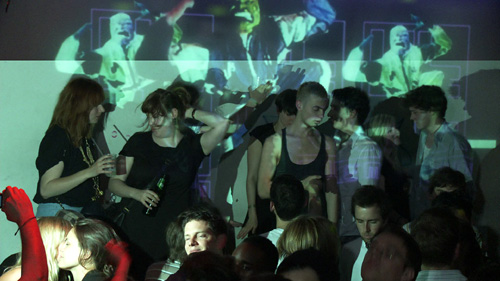
I think those people are not interested in appropriating the work of other artists. The reason is the ultimate party fun. When they’re flashing on Eurythmics or any other track they are using, it ‘s simply indicating what’s hot at the moment. This happened in Ragga and Dancehall before…
In Jamaica it is common to quote contemporary Pop and R’n’B tracks. I really like the idea, that there is a top ten hit and at the same time a Dancehall-version in Jamaica, a Baile Funk-version in Rio and a Baltimore Club-version in Baltimore. But it’s not limited on that territory, people from all over the world are listening to it.
Has anyone sampled or 'stolen' your tracks or ideas before?
Shir Khan: I compiled something like a sample library with samples from my record collection and a friend of mine used them to produce music. Those samples didn’t really belong to me, but I was not amused at all. As soon as you’ve made a collection, a selection of sounds that define your style, you’re trying to protect it. The feeling of being dispossessed made me think about copyrights in a different way.
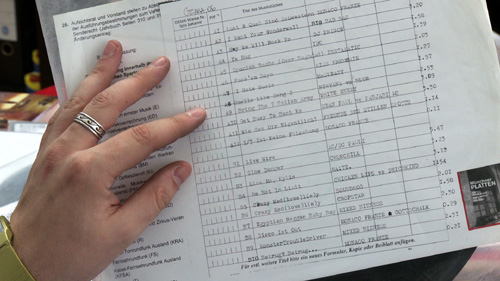 Do you refer to yourself as an artist?
Do you refer to yourself as an artist?
Shir Khan: When you’re doing things in a conceptual way, you can say you’re an artist. I’ve made the ‘Copyright Candies’-CD from an artistic point-of-view, but I do not refer to myself as an artist. Bastard Pop is influenced by art – as I mentioned before collage and Dadaism – and is part of the history of art, but you’re not an artist when you’ve produced a Mash-Up.
There are some people like Osymyso, whose wild cut-up-collages are really artistic. Or Cassetteboy, who uses old tape recordings – political speech, news and stuff – in a really creative way. (…)
|
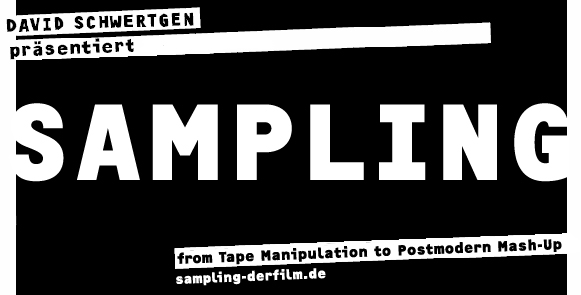
 Imagine the non-existence of a sampler, what music would you produce?
Imagine the non-existence of a sampler, what music would you produce? DJ Shadow, for example, is only using samples from the original pressing of the original record. Does that make sense for you?
DJ Shadow, for example, is only using samples from the original pressing of the original record. Does that make sense for you?

 Do you refer to yourself as an artist?
Do you refer to yourself as an artist?

 What is a Mash-Up? (Bootleg, Blend, Bastard Pop)
What is a Mash-Up? (Bootleg, Blend, Bastard Pop) What sources are used to create a Mash-Up?
What sources are used to create a Mash-Up? What is DJ Culture?
What is DJ Culture?